-
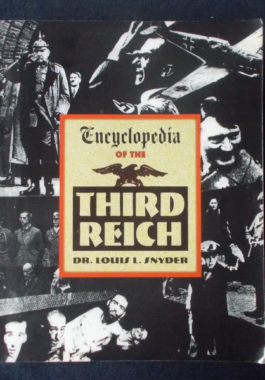 Regarded as a definitive selection of historical information covering all the important people of the time (Resistance members and Nazis); military operations; concepts; organisations of the era as well as those regarded as having been influential to the Nazi ideology. There is a chronology of every important date in the history of the Third Reich from the fall of the Weimar Republic to the end of World War II; a bibliography of pertinent books and articles; essays on art, architecture, film, theater, music, sports, religion, and education; documents such as Hitler's Last Will and his Political Testament and over 200 period photos and drawings.
Regarded as a definitive selection of historical information covering all the important people of the time (Resistance members and Nazis); military operations; concepts; organisations of the era as well as those regarded as having been influential to the Nazi ideology. There is a chronology of every important date in the history of the Third Reich from the fall of the Weimar Republic to the end of World War II; a bibliography of pertinent books and articles; essays on art, architecture, film, theater, music, sports, religion, and education; documents such as Hitler's Last Will and his Political Testament and over 200 period photos and drawings. -

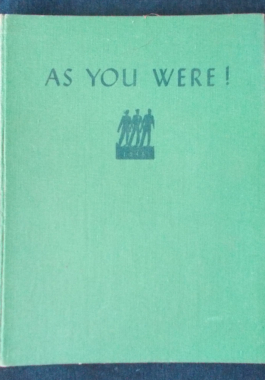 A Cavalcade of Events with The Australian Services from 1788 to 1946. Articles and notes; art and jokes; poetry and cartoons... from the servicemen - and even some of the women - who were there. This is no dry history of battles and dates - it's a memorial to all those fallen in war. Just some of the items in this volume: The Blood-bath at Cowra, E.V. Timms; When Sydney Fought A Zeppelin, 'Matelot'; Bless 'Em All, Biddy Moriarty (Australian Red Cross); Stout Hearts That Never Failed, Ion Idriess; A Service Girl In Japan, A.J. Poppins; and much more, together with art and photographs in black and white and colour - and of course, some typical Australian irreverent cartoons.
A Cavalcade of Events with The Australian Services from 1788 to 1946. Articles and notes; art and jokes; poetry and cartoons... from the servicemen - and even some of the women - who were there. This is no dry history of battles and dates - it's a memorial to all those fallen in war. Just some of the items in this volume: The Blood-bath at Cowra, E.V. Timms; When Sydney Fought A Zeppelin, 'Matelot'; Bless 'Em All, Biddy Moriarty (Australian Red Cross); Stout Hearts That Never Failed, Ion Idriess; A Service Girl In Japan, A.J. Poppins; and much more, together with art and photographs in black and white and colour - and of course, some typical Australian irreverent cartoons. -
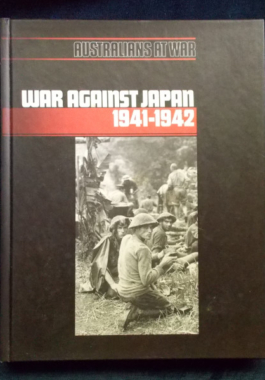 Time-Life series Australians At War, Volume 1. In South East Asia the European colonists lived an indolent life while to the north, the Japanese marched hungrily to war. In Singapore and up-country Malaya, there was still time for socialising and for serving officers to deck themselves out in their mess-dress finery for balls and dances, and for their wives to enjoy all the comforts that colonial service and a strong pound sterling could bring. Garrison life was an endless round of parties, parades and presentations at Government House. But with the splendour, there was a blind refusal in London and the Far East to see just how expansionist and bellicose the Japanese really were. Lavishly illustrated with archival black and white photographs and colour reproductions of contempory art.
Time-Life series Australians At War, Volume 1. In South East Asia the European colonists lived an indolent life while to the north, the Japanese marched hungrily to war. In Singapore and up-country Malaya, there was still time for socialising and for serving officers to deck themselves out in their mess-dress finery for balls and dances, and for their wives to enjoy all the comforts that colonial service and a strong pound sterling could bring. Garrison life was an endless round of parties, parades and presentations at Government House. But with the splendour, there was a blind refusal in London and the Far East to see just how expansionist and bellicose the Japanese really were. Lavishly illustrated with archival black and white photographs and colour reproductions of contempory art. -
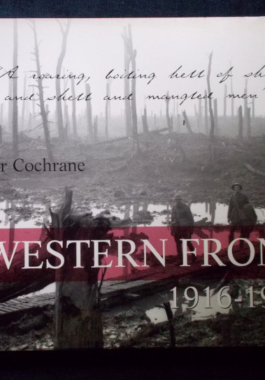 A fascinating, unsettling and unforgettable view of one of the most compelling events in modern history. For all the significance attached to the doomed heroism at Gallipoli, the Western Front was the single greatest wartime tragedy that elicited the greatest sacrifice. Of the 61,720 who died in the course of the war, 46,319 were lost at the Western Front. In a matter of weeks, more Australians were slain in or or two battles than in the entire eight months at Gallipoli. Those terrible years, 1916 to 1918, represent the whole panoply of modern warfare. This is an examination of the record of official and unofficial images in unexpected ways. It looks at the major battles of the campaign, the grim conditions endured by the soldiers, the workers of the massive support system, the valiant efforts of stretcher-bearers and medical workers and, finally, the run of victories under Monash in which Australian soldiers distinguished themselves above and beyond their numerical presence. Illustrated with black and white photographs.
A fascinating, unsettling and unforgettable view of one of the most compelling events in modern history. For all the significance attached to the doomed heroism at Gallipoli, the Western Front was the single greatest wartime tragedy that elicited the greatest sacrifice. Of the 61,720 who died in the course of the war, 46,319 were lost at the Western Front. In a matter of weeks, more Australians were slain in or or two battles than in the entire eight months at Gallipoli. Those terrible years, 1916 to 1918, represent the whole panoply of modern warfare. This is an examination of the record of official and unofficial images in unexpected ways. It looks at the major battles of the campaign, the grim conditions endured by the soldiers, the workers of the massive support system, the valiant efforts of stretcher-bearers and medical workers and, finally, the run of victories under Monash in which Australian soldiers distinguished themselves above and beyond their numerical presence. Illustrated with black and white photographs. -
 Published by the Dachau Museum, this book serves as a reminder of the victims of the Holocaust. It contains reproductions of official documents, anti-Semitic propoganda, photos of the camps, the prisoners and their few possessions that we callously stolen from them; letters of condolence from Camp Commandants to grieving widows, records of military personnel and so much more.
Published by the Dachau Museum, this book serves as a reminder of the victims of the Holocaust. It contains reproductions of official documents, anti-Semitic propoganda, photos of the camps, the prisoners and their few possessions that we callously stolen from them; letters of condolence from Camp Commandants to grieving widows, records of military personnel and so much more. -
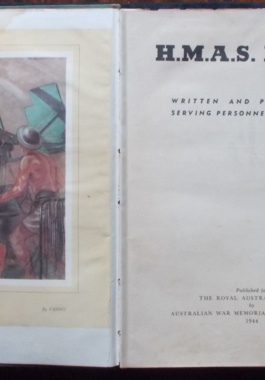
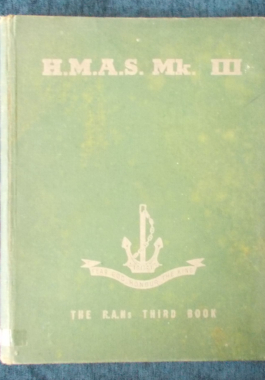
Published for the Royal Australian Navy buy the Australian War Memorial, Canberra in 1944. A book chockful of fabulous artwork, sketches, photographs, poems, writings and memoirs of the serving personnel of the Royal Australian Navy and their service in World War II - the men who were there as it all happened. A must for any real war buff. Illustrated in black and white and colour.
-
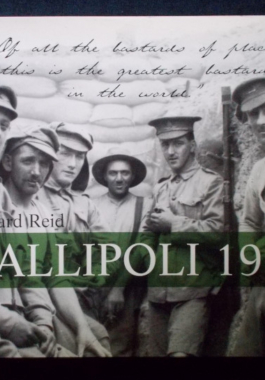
Gallipoli 1915: Richard Reid
$15.00A new look at the old legend of Anzac - an account of how ordinary blokes from many different countries coped in extraordinary circumstances not only in battle but back in the trenches. These men, whose fingers were too frozen to pull the trigger, buried their best mates, slept in holes in the ground and struggled with lice infested clothes. This book presents a remarkable and absorbing series of photographs from Australia's major archival collections, many previously unseen. These images often taken by the soldiers themselves, combined with illustrations created for the newspapers, were the images responsible for creating the public memory of Gallipoli back in Australia. The commentary of historian, Dr Richard Reid of the Department of Veterans' Affairs, together with moving extracts from soldiers letters and diaries, along with the official dispatches of war correspondents present at Gallipoli, paint an unforgettable record of the sacrifices, courage and determination embodied in the Anzac legend. -
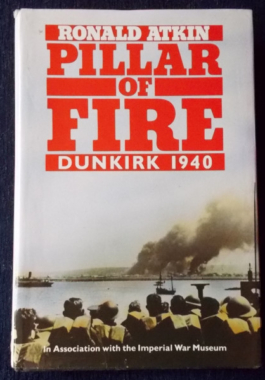
Pillar Of Fire: Ronald Atkin
$15.00In the space of three and a half weeks during May and June of 1940, Nazi Germany came perilously close to winning the war a scant ten months after it started. The British Expeditionary Force and the French and Belgian allies were cut off in the North and driven to the very sands of the Channel and the ruins of Dunkirk, the lone port still in the hands of the B.E.F. Britain faced catastrophe. How that catastrophe was averted through a combination of enemy blunders and British resourcefulness is told here in an account that exposes the 'miracle' of Dunkirk. Here is the true story, chronicled through diaries, memoirs and personal reminiscences of the hundreds of men who lived through those weeks; COs, foot soldiers, generals and privates. Very in-depth.
-
 Who is Captain Sir Tom Moore? You've seen him on the television walking the length of his garden. A frail elderly man, doing his bit at a time of crisis. But he wasn't always like this. From a childhood in the foothills of the Yorkshire Dales, Tom Moore grew up in a loving family, which wasn't without its share of tragedy. It was a time of plenty and of want. When the storm clouds of the Second World War threatened, he raised his hand and like many of his generation, joined up to fight. His war would take him from a country he had never left to a place which would steal his heart, India and the Far East, to which he would return many years later to view the sight he had missed first time around: the distant peak of Everest. Captain Tom's story is our story. It is the story of our past hundred years here in Britain. It's a time which has seen so much change, yet when so much has stayed the same: the national spirit, the can-do attitude, the belief in doing your best for others. Illustrated with photographs.
Who is Captain Sir Tom Moore? You've seen him on the television walking the length of his garden. A frail elderly man, doing his bit at a time of crisis. But he wasn't always like this. From a childhood in the foothills of the Yorkshire Dales, Tom Moore grew up in a loving family, which wasn't without its share of tragedy. It was a time of plenty and of want. When the storm clouds of the Second World War threatened, he raised his hand and like many of his generation, joined up to fight. His war would take him from a country he had never left to a place which would steal his heart, India and the Far East, to which he would return many years later to view the sight he had missed first time around: the distant peak of Everest. Captain Tom's story is our story. It is the story of our past hundred years here in Britain. It's a time which has seen so much change, yet when so much has stayed the same: the national spirit, the can-do attitude, the belief in doing your best for others. Illustrated with photographs.


